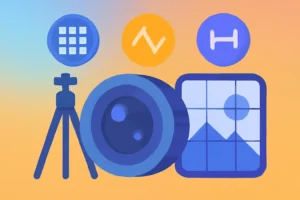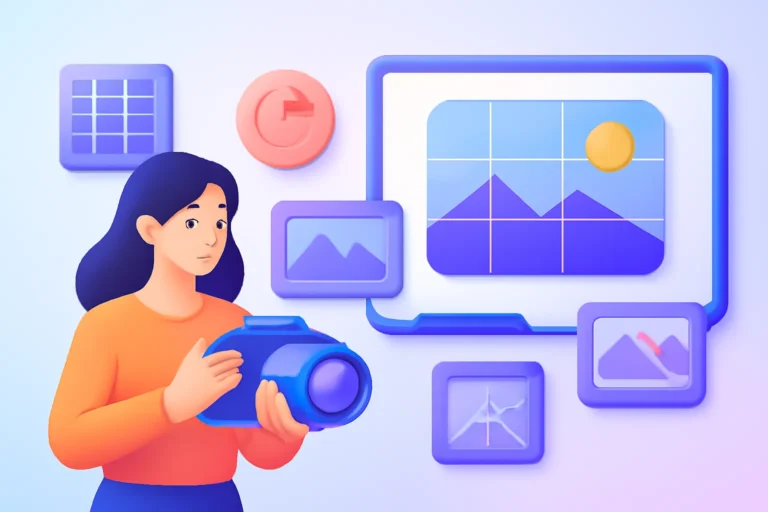The future of any business in the modern world is the personality of its customer experience. With so many competitions we face in life and with so many alternatives, a service or product well executed anymore is simply not good enough.
The companies that prosper are those that have fantastic, better customer experiences with customers across all touchpoints continuously. So, this customer experience business, how do we get it done? It’s the accumulation of all the touchpoints a customer has with your company from when they first hear about you to when they receive their post-purchase care.
Your customer experience is your best differentiator. Customer experience builds loyalty and repeat business and gets your customers to become your greatest champions. This guide takes you through 10 step-by-step steps to not only fulfill but impress customers.
Now, in our times, we are going to put aside old sayings and show you an alternative approach to connect with your audience on a deeper level.
1. Add Depth to Your Know-How with Customer Journey Mapping
To become more skilled in the customer experience, you have to first look at it from their side. A customer journey map is a rough map of the entire process that the customer has with your company. It’s an amazing tool that forces you to look at your company through their eyes and spot areas of tension and opportunity.
How to start:
- Sketch out all the touchpoints a customer has with your company.
- For every activity, ask yourself what the customer is doing, thinking, and feeling.
- Buying a new smartphone as an example. It starts with web browsing, moves on to store visits to get hands-on and know more about it, and ends with unboxing and setup. Map it out, and it points out pain points such as a confusing checkout page or frustrating support phone tree.
2. Empower Your Frontline Employees
They are the face of your company and the ones to make or break a customer’s experience. They must be adequately empowered with tools, knowledge, and action autonomy.
Empowerment in action: Not training on anything pertaining to product knowledge and not delegating, making a decision that will correct an issue for a customer in the moment without going through several levels of management.
The store attendant can reverse a purchase in the moment or offer a discount to an upset customer without the manager’s nod. Not only does it fix the problem in a hurry, but it does it because they truly care for their joy, so they go away with a positive impression of the brand.
3. Personalize Every Interaction
Customers no longer react to generic, canned, one-size-fits-all communications. They expect brands to hear them, recall what they’re passionate about, and address them as if the transaction is special and personal. Personal experiences work because they make customers feel valued and acknowledged.
The new model: Personalization is more than putting a customer’s first name on an offer. It is utilizing purchase history or browsing history to allow for more personalized product recommendations. It may be post-purchase with suggestions or suggestions on complementary items. A website for online video streaming that suggests films and shows to you based on what you previously watched, e.g., This puts your needs first and provides you with an uninterrupted, personalized experience that surrounds you.
4. Utilize Data and Analytics
Customer experience is data money. Collecting and analyzing customer interaction with your business enables you to generate rich insights into customer issues, emotions, and behavior. That is gold for better decision-making.

Actionable findings: leverage your web analytics data, CRM systems, and social media engagement.
Find out what’s hot: where are people dropping off during checkout? What are people calling to complain about most in terms of customer service? An A/B test department store might buy data to find out that customers buying one particular pair of jeans buy one particular fashion belt. Now they have data to use to better bundle or discount by email more effectively.
5. Create an Integrated Omnichannel Experience
Your customers are interacting with your brand across a variety of different platforms: website, mobile app, social media, and physical store. That is an experience where a customer’s movement between channels is frictionless and seamless.
Connecting the dots: Envision a customer coming to your website, looking at a product, and then making a trip to your store to purchase the product. Their journey needs to be connected.
Your salesperson in the store needs to see their Surf online activity and provide them with relevant advice. This is not about customers having to get themselves understood but about feeling they are part of an integrated brand experience.
6. Be Proactive in Communication
Don’t have a customer call because they need something. Stay ahead of the game. Get ahead of what they’re going to need and do things ahead of time before things become colossal issues. This indicates that you care about them and their experience.
Head start: It may be a flash notice when a shipment was sent and a tracking number assigned, or a cell phone notice that a customer is experiencing a service blackout in his area.
One of them is a very good example of an airline business company that sends a cell phone message to the passenger hours before taking flight with gate information and notification in case of delay. It reassures an individual and improves the overall journey experience.
7. Collect and React to Customer Feedback
Your customers stand the best chance of discovering you. Asking them first and, better still, acting on it is the formula for long-term growth. That makes them feel loved and appreciated in building your brand.

How-to guide:
- Use a combination of surveys, review requests, and social monitoring.
- Kindly send a short survey soon after a customer service interaction to measure their feedback.
- When they post a review, do make sure to reply back to it, whether positive or negative.
- Example of a software company sending out a survey to elicit feedback on an upcoming feature and then posting it online and acting on the feedback accordingly. This builds trust and demonstrates a willingness to listen.
8. Streamline Your Processes
A better customer experience is the enemy of simplicity. Each step in your site navigation through to checkout needs to be simple to perform and simple to comprehend. If it’s too complicated for someone to do business with you, they will do business with another company.
Breaking it down: Walk through your whole customer journey and look for opportunities to simplify. Is your checkout process being slow? Is your contact form asking too many questions? Look at a company with one-click checkout or a website with a big, obvious “contact us” button. Little things can make a big difference in eliminating friction and increasing satisfaction.
9. Develop a Strong Community
Having someone in your corner can cause your customers to be a support group in and of themselves and give customers the sensation of even more identification with your company. A good community offers back value over and above your product or service.
Relationship building: Consider creating an online community where the customer is the center of it all, creating a community within your app, or having a brand event. Consider a trendy coffee shop using its social network to sell coffee but sharing stories and photos about the customers too. Customers have the sense of belonging to something more than just a transaction.
10. Measure and Optimize Continuously
Improved customer experience is not something you do as a project and then put to one side; it’s an ongoing process. You must constantly be checking your progress, comparing your metrics, and tightening the nuts. The market keeps changing, and so does the nature of what the customer requires.
Metrics to track: Track important top-level performance indicators like Customer Satisfaction Score (CSAT), Net Promoter Score (NPS), and Customer Effort Score (CES). If your CSAT is dropping after releasing website updates, e.g., you can be certain that you’ll need to revisit and ensure that specific update. With these tracked, you will understand what works and what does not.
Conclusion
The key to an almost flawless customer experience is to have the customer at the foreground of all business decisions. It is more a sense of not selling something but sharing something.
If you create a rhythm of learning about your customers, involving your people, and constantly perfecting your processes, then you can create a frictionless and memorable experience that builds loyalty and makes you stand out as a business.
FAQs
What is customer experience?
Customer experience is the entire aggregate of all interaction your customer has with your company from discovery to post-purchase support.
How is customer experience different from customer service?
Customer service is part of the entire customer experience; it’s a phone or person-to-person touch to resolve an immediate issue, but customer experience is the entire process.
How do I measure success with my customer experience strategy?
You can also gauge success on Customer Satisfaction Score (CSAT), Net Promoter Score (NPS), and Customer Effort Score (CES) metrics in the form of measuring sentiment and loyalty.
How do I start to enhance the customer experience of my business?
Begin by creating a customer journey map to identify the most important touchpoints and pain points, and then later use them as the benchmark for your endeavors and improvements.


